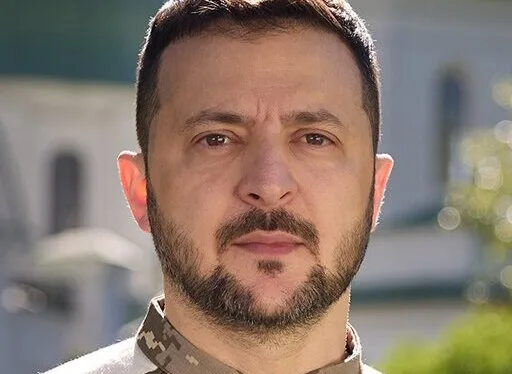Trump Suggests U.S. Control of Zaporizhzhia Nuclear Plant in Ukraine ceasefire negotiations, stirring global concern
Donald Trump has proposed a shocking deal to Ukrainian President Volodymyr Zelenskyy, suggesting that the United States could own and operate Ukraine’s Zaporizhzhia nuclear power plant as part of a broader ceasefire agreement. The move has sent shockwaves through diplomatic circles, raising serious questions about the future of Ukraine’s energy sovereignty and international involvement in the ongoing war.
Zelenskyy confirmed the unprecedented proposal following a call with the former U.S. president on Wednesday. “We talked only about one power plant, which is under Russian occupation,” he stated, referring to Zaporizhzhia, Europe’s largest nuclear facility. While Trump’s suggestion has ignited fierce discussions, the White House attempted to downplay the idea, asserting that negotiations had “moved beyond” mineral wealth agreements and were now focused on achieving sustainable peace.
Meanwhile, Ukraine signalled readiness to halt strikes on Russia’s energy infrastructure in exchange for a ceasefire agreement. However, Zelenskyy expressed scepticism about Vladimir Putin’s intentions, especially after Russian forces launched fresh missile and drone attacks immediately after purportedly agreeing to a truce. Overnight bombardments left at least one person dead and damaged two hospitals, according to Ukraine’s defence ministry. Additionally, a railway energy facility in Dnipropetrovsk was struck, further deepening doubts about Moscow’s commitment to peace.
As fighting raged on, Ukrainian drones struck a major Russian oil pipeline station in Krasnodar’s Kavkazskaya region, causing an extensive fire. Russian authorities deployed over 400 firefighters and more than 150 emergency vehicles in a desperate effort to contain the blaze.
European leaders have responded with deep scepticism to the Trump-Putin ceasefire concept. Many believe Putin’s demands—such as stripping Ukraine of Western arms, intelligence, and military capabilities—aim to weaken Kyiv rather than pave the way for genuine peace. EU foreign policy chief Kaja Kallas declared, “It is clear that Russia does not truly seek to make concessions,” reinforcing concerns that Moscow’s ceasefire rhetoric serves only its strategic interests.
Embed from Getty ImagesDespite the ongoing conflict, Ukraine’s military continues to bolster its defence. Zelenskyy confirmed that new F-16 fighter jets had arrived in Ukraine, though he withheld details on their numbers. The jets, first delivered in 2024, mark a crucial reinforcement of Ukraine’s air capabilities amid intensifying Russian aggression.
Meanwhile, the European Union is ramping up support for Kyiv. Kallas plans to present a proposal in Brussels for supplying Ukraine with two million rounds of large-calibre artillery ammunition. Additionally, the EU executive is pushing to prioritise defence contracts within the bloc and allied nations, excluding the UK, US, and Turkey unless they sign a security and defence partnership with the EU. A €150 billion loan scheme has also been proposed, ensuring that at least 65% of the funds support European, Norwegian, or Ukrainian arms manufacturers.
The European Commission is also taking steps to reduce Ukraine’s reliance on Elon Musk’s Starlink satellite services. The white paper on European defence suggests funding alternative satellite providers to strengthen Ukraine’s resilience. Recent concerns over potential restrictions on Starlink access have fuelled efforts to establish independent European-operated systems.
As diplomatic tensions escalate, Trump’s nuclear proposal remains a focal point of international debate. While some view it as a strategic move in negotiations, others warn that it sets a dangerous precedent for foreign control over sovereign assets. For now, Ukraine remains firm in its demands: any ceasefire must ensure the protection of both civilian and energy infrastructure, and trust in Russia remains at an all-time low.
